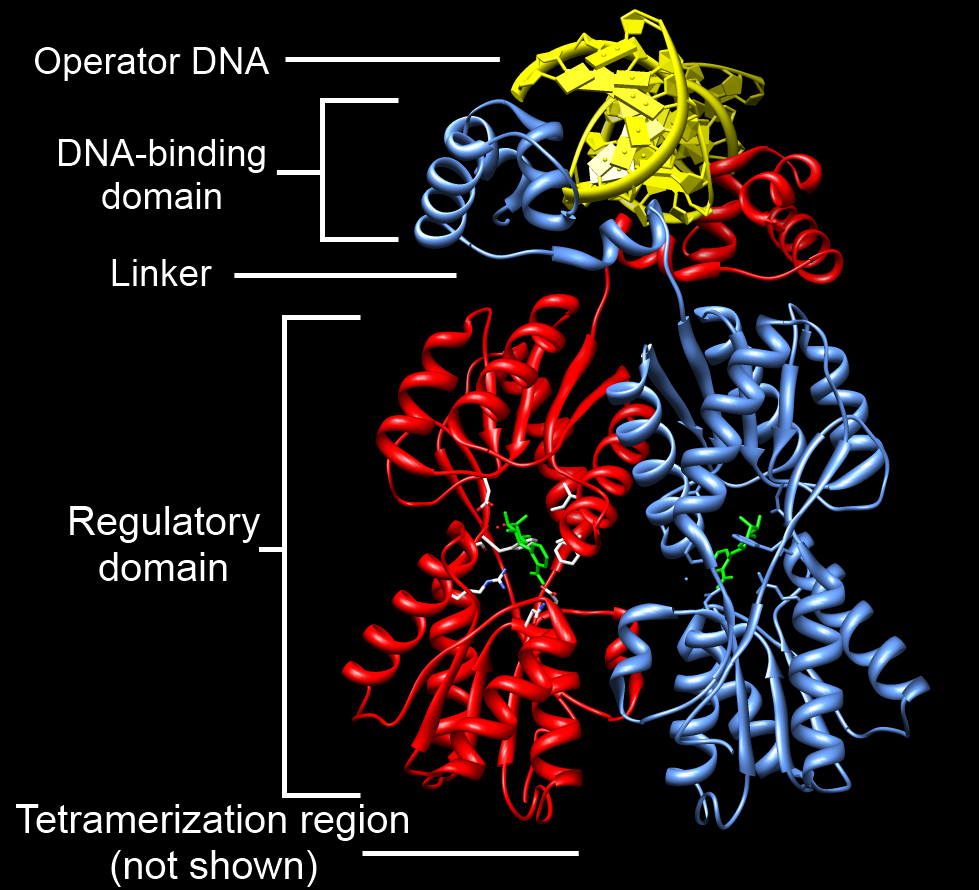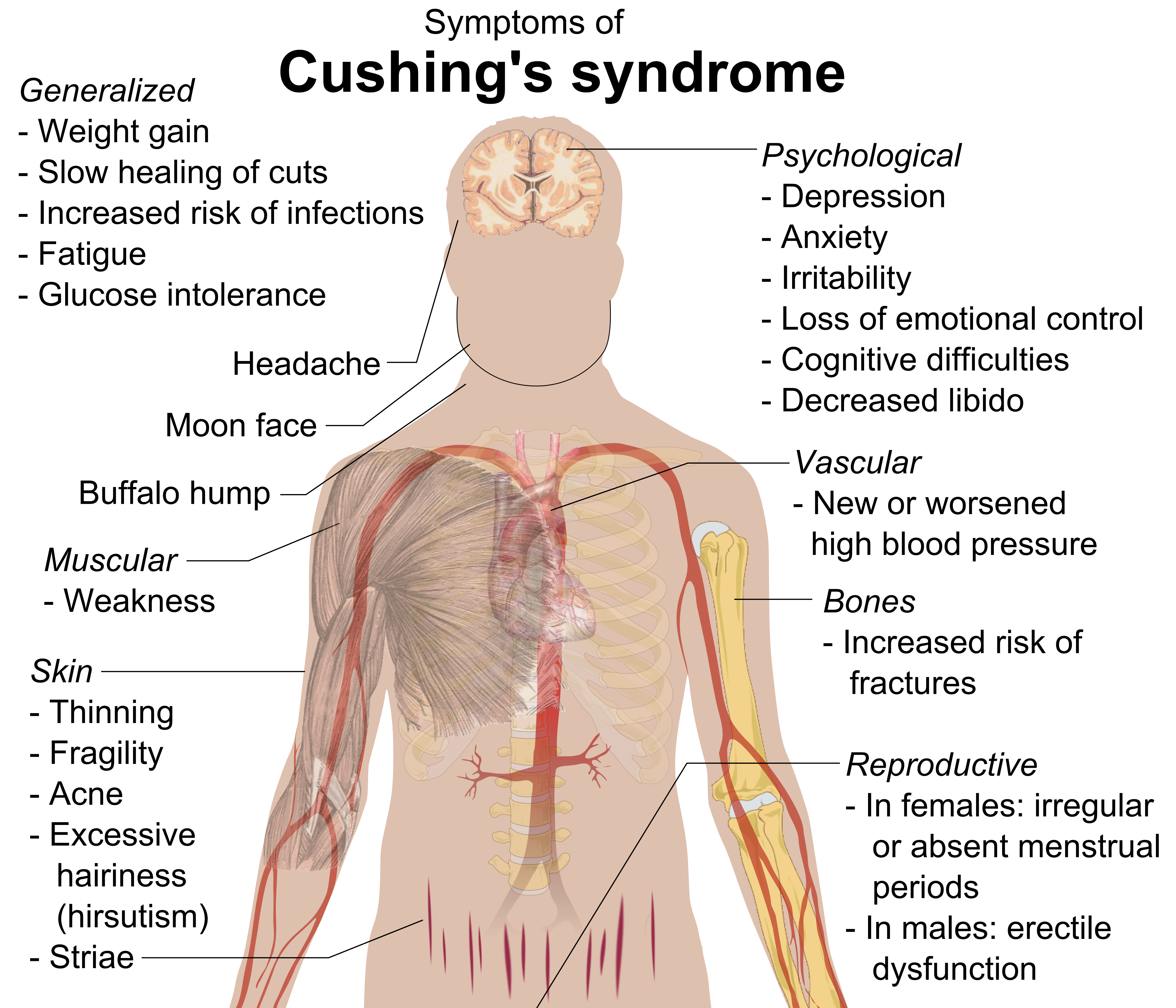|
Glucocorticoid Resistance
Generalized glucocorticoid resistance or Chrousos syndrome is a rare genetic disorder that can run in families or be sporadic. It is characterized by partial or generalized target-tissue insensitivity to glucocorticoids. The clinical spectrum includes severe, potentially fatal conditions like hypoglycemia, alkalosis, or severe hypokalemia, as well as completely asymptomatic forms. The disease's most prevalent symptom is fatigue. The elevated 24-hour urinary free cortisol (UFC) excretion in the absence of clinical signs of hypercortisolism and the elevated serum cortisol concentrations point to the diagnosis of generalized glucocorticoid resistance. The goal of treatment for generalized glucocorticoid resistance is to reduce excessive ACTH secretion, which in turn reduces the production of more adrenal steroids that have androgenic and mineralocorticoid properties. High dosages of synthetic glucocorticoids that spare mineralocorticoids, like dexamethasone, are used a ... [...More Info...] [...Related Items...] OR: [Wikipedia] [Google] [Baidu] |
DNA-binding Domain
A DNA-binding domain (DBD) is an independently folded protein domain that contains at least one structural motif that recognizes double- or single-stranded DNA. A DBD can recognize a specific DNA sequence (a recognition sequence) or have a general affinity to DNA. Some DNA-binding domains may also include nucleic acids in their folded structure. Function One or more DNA-binding domains are often part of a larger protein consisting of further protein domains with differing function. The extra domains often regulate the activity of the DNA-binding domain. The function of DNA binding is either structural or involves transcription regulation, with the two roles sometimes overlapping. DNA-binding domains with functions involving DNA structure have biological roles in DNA replication, repair, storage, and modification, such as methylation. Many proteins involved in the regulation of gene expression contain DNA-binding domains. For example, proteins that regulate transcription by ... [...More Info...] [...Related Items...] OR: [Wikipedia] [Google] [Baidu] |
Cushing's Syndrome
Cushing's syndrome is a collection of signs and symptoms due to prolonged exposure to glucocorticoids such as cortisol. Signs and symptoms may include high blood pressure, abdominal obesity but with thin arms and legs, reddish stretch marks, a round red face, a fat lump between the shoulders, weak muscles, weak bones, acne, and fragile skin that heals poorly. Women may have more hair and irregular menstruation. Occasionally there may be changes in mood, headaches, and a chronic feeling of tiredness. Cushing's syndrome is caused by either excessive cortisol-like medication, such as prednisone, or a tumor that either produces or results in the production of excessive cortisol by the adrenal glands. Cases due to a pituitary adenoma are known as Cushing's disease, which is the second most common cause of Cushing's syndrome after medication. A number of other tumors, often referred to as ectopic due to their placement outside the pituitary, may also cause Cushing's. Some of ... [...More Info...] [...Related Items...] OR: [Wikipedia] [Google] [Baidu] |
Growth Hormone Deficiency
Growth hormone deficiency (GHD), or human growth hormone deficiency, is a medical condition resulting from not enough growth hormone (GH). Generally the most noticeable symptom is that an individual attains a short height. Newborns may also present low blood sugar or a small penis size. In adults there may be decreased muscle mass, high cholesterol levels, or poor bone density. GHD can be present at birth or develop later in life. Causes may include genetics, trauma, infections, tumors, or radiation therapy. Genes that may be involved include GH1, GHRHR, or BTK. In a third of cases no cause is apparent. The underlying mechanism generally involves problems with the pituitary gland. Some cases are associated with a lack of other pituitary hormones, in which case it is known as combined pituitary hormone deficiency. Diagnosis involves blood tests to measure growth hormone levels. Treatment is by growth hormone replacement using synthetic human growth hormone. The frequency ... [...More Info...] [...Related Items...] OR: [Wikipedia] [Google] [Baidu] |
Glucocorticoid Deficiency
Adrenal insufficiency is a condition in which the adrenal glands do not produce adequate amounts of steroid hormones. The adrenal gland normally secretes glucocorticoids (primarily cortisol), mineralocorticoids (primarily aldosterone), and androgens. These hormones are important in regulating blood pressure, electrolytes, and metabolism as a whole. Deficiency of these hormones leads to symptoms ranging from abdominal pain, vomiting, muscle weakness and fatigue, low blood pressure, depression, mood and personality changes (in mild cases) to organ failure and shock (in severe cases). An adrenal crisis may occur if the body is subjected to stress, such as an accident, injury, surgery, or severe infection; this is a life-threatening medical condition resulting from severe deficiency of cortisol in the body. Death may quickly follow. Adrenal insufficiency can be caused by dysfunction of the adrenal gland itself, whether by destruction (e.g. Addison's disease), failure of development (e ... [...More Info...] [...Related Items...] OR: [Wikipedia] [Google] [Baidu] |
46,XX
A karyotype is the general appearance of the complete set of metaphase chromosomes in the cells of a species or in an individual organism, mainly including their sizes, numbers, and shapes. Karyotyping is the process by which a karyotype is discerned by determining the chromosome complement of an individual, including the number of chromosomes and any abnormalities. A karyogram or idiogram is a graphical depiction of a karyotype, wherein chromosomes are organized in pairs, ordered by size and position of centromere for chromosomes of the same size. Karyotyping generally combines light microscopy and photography, and results in a photomicrographic (or simply micrographic) karyogram. In contrast, a schematic karyogram is a designed graphic representation of a karyotype. In schematic karyograms, just one of the sister chromatids of each chromosome is generally shown for brevity, and in reality they are generally so close together that they look as one on photomicrographs as well u ... [...More Info...] [...Related Items...] OR: [Wikipedia] [Google] [Baidu] |



